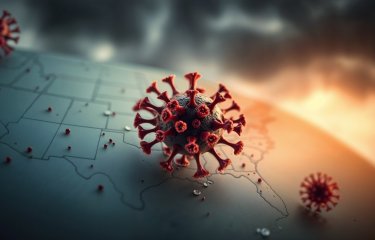Multiple myeloma is a cancer of the bone marrow, with a life expectancy of less than 5 years post-diagnosis. Proteasome inhibitors, the therapeutic backbone of current treatments, are very effective in treating newly diagnosed cancers but resistance or intolerance to these molecules inevitably develop, leading to relapses. While studying a neglected tropical disease[1], Buruli ulcer, researchers from the Institut Pasteur and Inserm discovered a novel therapeutic target for multiple myeloma that could allow to bypass this resistance. The results of this study were published in EMBO Molecular Medicine on January 11th, 2022.
Multiple myeloma is a cancer caused by the abnormal proliferation of plasma cells, white blood cells producing antibodies, in the bone marrow. Scientists from the Institut Pasteur and Inserm, in collaboration with the University of Paris and the Saint Louis Hospital (AP-HP) describe a new mechanism to selectively kill these cancer cells.
Researchers in the Immunobiology of Infection Unit at the Institut Pasteur made this discovery while working on a completely different disease: Buruli ulcer. This neglected tropical disease, caused by infection with a bacterium (Mycobacterium ulcerans), can provoke severe and irreversible skin necrosis. Lesions are due to bacterial production of a toxin called "mycolactone" in infected skin. In 2016, this team discovered how mycolactone causes the clinical manifestations of Buruli ulcer: by targeting the translocon (Sec61).
The translocon is a channel anchored in the wall of a cell compartment called the endoplasmic reticulum that plays a crucial role in the synthesis of a subset of proteins: those that are destined to be secreted in the extracellular medium. The translocon controls the import of these proteins into the endoplasmic reticulum, and it is the main gateway to the secretory pathway. By blocking Sec61, mycolactone retains these proteins inside the cell and provokes their degradation by the proteasome, a stressful process that can evolve towards programmed cell death.
Using murine models and tumors from patient biopsies, researchers demonstrated that mycolactone is highly toxic to multiple myeloma cells, including those that have become resistant to proteasome inhibitors, at doses that are non-toxic to normal cells. In addition, they showed that mycolactone and proteasome inhibitors work in synergy, mutually potentiating their anti-cancer effects.
“This study provides the proof of concept that the translocon is a new therapeutic target in multiple myeloma. The next step will be to identify drug-like molecules inhibiting Sec61, which could constitute a new treatment for this cancer. In addition, we aim to study whether this target could be common to other cancers." explains Caroline Demangel, head of the Immunobiology of Infection Unit at the Institut Pasteur.
[1] WHO definition: Neglected tropical diseases (NTDs) are a diverse group of 20 diseases with one thing in common: their impact on impoverished communities. Together, NTDs affect over a billion people with devastating consequences on public health and economy.
Source
The Sec61 translocon is a therapeutic vulnerability in Multiple Myeloma, EMBO Molecular Medicine, January 11, 2022
Antoine Domenger 1,2, Caroline Choisy 3, Ludivine Baron 1, Véronique Mayau 1, Emeline Perthame4, Ludovic Deriano 5, Bertrand Arnulf 3,6, Jean-Christophe Bories 3, Gilles Dadaglio #1, Caroline Demangel #1
1 Unité ‘Immunobiologie de l’Infection’, Institut Pasteur, INSERM U1224, Université de Paris, 75015 Paris, France
2 Université de Paris, Sorbonne Paris Cité, 75013 Paris, France
3 INSERM U976 Équipe 5, Institut de Recherche Saint Louis, Université de Paris, 75010 Paris, France
4 Bioinformatics and Biostatistics Hub, Institut Pasteur, Université de Paris, 75015 Paris, France
5 Unité ‘Intégrité du Génome, Immunité et Cancer’, Equipe Labellisée Ligue Contre Le Cancer, Institut Pasteur, INSERM U1223, Université de Paris, 75015 Paris, France
6 APHP Department of Immuno-Hematology, Hôpital Saint Louis, 75010 Paris, France
#These authors contributed equally to this study





